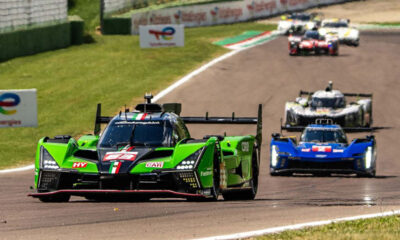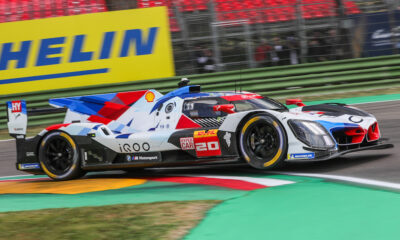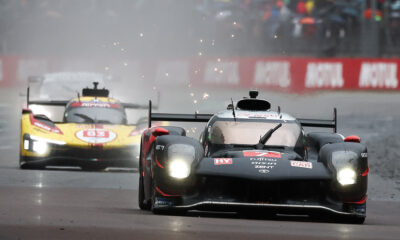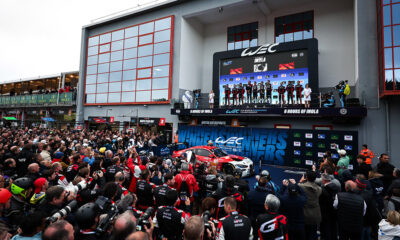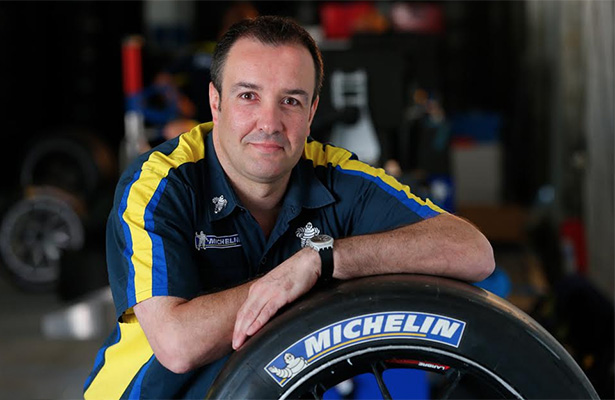
Photo: Michelin
Michelin continued its dominance in the FIA World Endurance Championship in 2015, with the French tire giant claiming titles in three of the four classes, only losing out in LMP2, a class where it did not have a full-season participant in. (En Français)
While tire regulations have remained stable in both LMP1 and GTE, the manufacturer still saw advancements made over the course of the season, notably in the production-based ranks and with Porsche.
Endurance-Info caught up with Jerome Mondain, manager of Michelin’s FIA WEC activities, to reflect back on the 2015 season.
The rules in LMP1 have not changed but have the tires?
“One can certainly not say that nothing has been done. Certainly, there is no revolution as we have seen with the arrival of the new regulations.
“We’ve entered a normal renewal cycle between 2014 and 2015, except for the range of rain tires. We worked on what we wanted considering the six-hour races where we had to at least do one double stint with the same tires.
“At Spa, this factor was decisive for the victory. Now we’ll make some adjustments to the range as well for next year knowing that the cars have evolved further.”
Has longevity been improved in the 24 Hours of Le Mans as well?
“The basic strategy of the manufacturers is to do quadruple stints, and we are pretty close to our record dating from 2011 when Benoit Treluyer completed five stints or 750 km (3 hours and 20 minutes) with the same tires.
“We must bring the best service to our customers. At Le Mans, Michelin had 41 cars. We have a good 20 technicians who closely follow the tire operation within each team.”
How has the implantation of Full Course Yellows changed things for tire strategy?
“With the Full Course Yellow, tires go down in temperature. We also monitor the pick-up which is always important on the tires of the prototypes for overtaking but these factors are taken into account during development.
“You cannot deny that a professional driver will better [handle] a restart better than a gentleman driver when tire temperature has dropped.”
Michelin is Nissan’s partner in LMP1. Are there any changes expected to be made to the tires for 2016?
“We’re working with them to find the best solution. We’ve seen this year the capacity of the tires. The work is done on the track but also on the simulator. It’s necessary to test and run them. Everything remains open for 2016.”
Michelin struggled in LMP2, particularly in dry conditions. How do you explain that?
“The LMP2 class does not use a confidential tire. We must leave it up to the teams and even our competitors. Michelin is not accustomed to this type of operation.
“Our old range was confidential and therefore we had to work from the ground up, with one possible change per year.
“The goal is to be competitive and that is what we are going to work on this winter. There’s no withdrawal from Michelin in LMP2.”
How does the new-for-2016 GTE regulations impact the tires?
“Again, the range will be adjusted. The cars are expected to have more aero. We will take this into account because it is something that helps a tire perform. When there is more load, the tire working better.
“It will accommodate the range but I’m not worried. In GT, the BoP levels the performance. The tire can make a difference if taken at the right time. This is why winter development is paramount.”
Michelin has had only a small presence in GT3 up until now with the launch of the Michelin GT3 Challenge. Is there a reason?
“We participated in the launch of the category, and have been there for several years. Michelin wanted to go GT3.
“This return to an ACO-labeled series serves as a pyramid. GT3 racing is very beautiful and disputed. Michelin is also present the Nürburgring 24 with confidential tires.
“For the rest, the GT3 is more focused on the gentlemen drivers and the category is in line with the customer-service competition and championships tenders.
“We must therefore align ourselves on these calls but Michelin is intent to remain active in GT3.”


















